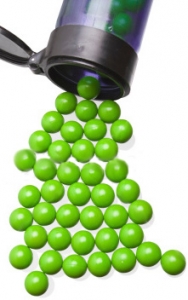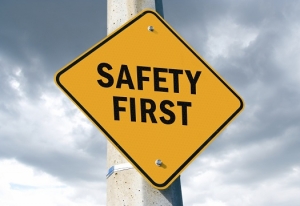4 Essential Tips for Winter Paintball
AC Paintball is one of New Jersey’s premiere outdoor paintball facilities and our fields are open for gameplay year round, rain or shine. While we don’t see too much crazy weather, freezing temperatures and the occasional snowfall can impact how we play paintball. Why stop playing paintball for a little bad weather? Instead, adjust your gameplay style and prepare your gear for the cold. Here are our best tips to help winterize your paintball game:
1. Prevent Paintballs from Breaking
- Keep paintballs warm as long as possible
- Use an isolated cooler with heat packs before gameplay
- Carry paintballs in pod pack underneath clothing
- Load hopper as late as possible
- Purchase paintballs designed for winter weather
 It’s a myth that paintballs can freeze. Most contain oil and glycerin (a common ingredient of antifreeze), so the shell would actually shatter long before it could possibly be frozen. The shell of a paintball is made of gelatin or vegetable starch, both of which can become brittle in cold temperatures. After this happens, the paintball can easily crack or break on contact with your hand or while inside your marker’s barrel.
It’s a myth that paintballs can freeze. Most contain oil and glycerin (a common ingredient of antifreeze), so the shell would actually shatter long before it could possibly be frozen. The shell of a paintball is made of gelatin or vegetable starch, both of which can become brittle in cold temperatures. After this happens, the paintball can easily crack or break on contact with your hand or while inside your marker’s barrel.
Help prevent paintball breakage by keeping them out of the cold as long as possible. Bring a small insulated cooler, warmed to room temperatures, to keep paintballs in before gameplay. During the game, If you use a pod pack or vest, these won’t sufficient to keep paintballs warm in the winter. What you can do, however, is wear the pod pack underneath your coat or an outer layer and carry a heat pack on your body.
In addition, try to remove paintballs from warmth and load your hopper at the very last minute. The hopper will not provide any protection from the cold. Once loaded, try your best not to shake your hopper unnecessarily to avoid busting the paintballs inside.
Another option is to purchase paintballs specially made for cold temperatures. These are designed with a thicker shell and a stronger fill that will resist damage. While they may cost a little more, it is worth it for the convenience.
2. Keep Co2 Tank Functioning Properly
- Shoot less and at slower rate
- Remove expansion chambers
- Point marker up when not shooting
- Never use heat packs on Co2 tank
- Alternatively, upgrade to a HPA tank
Co2 tanks work fine in warmer weather, but the cold can cause them to have all sorts of problems. The main issue is a decrease in pressure, which causes the velocity to drop and a delay in your marker’s cycle. The end result is an extended stuttering sound, similar to that of a machinegun, as it takes extra effort just to work properly. Eventually, the marker body may freeze and a thick white vapor will come out of the barrel. Not cool at all!
The ideal solution is to upgrade to a high pressure air tank (HPA). These are not susceptible to any problems from cold temperatures and function great in warm weather as well. Plus, an HPA tank will provide increased efficiency and accuracy when shooting. If you upgrade to an HPA, your game will be improved year round.
However, we know upgrades can be costly, so if you need to stick with a Co2 tank, there are some things you can do to make it more manageable in the winter: Shoot less and at a slower rate. This will make it less likely to jam up. Co2 expands slower in cold air, so it just needs a little extra time to function properly. You should also point your marker up when not shooting, to keep the liquid Co2 in the bottle and out of the valve. Remember to take any expansion chambers off as well. Never use heat packs on a Co2 tank, although it seems logical, it does not help because the heat can increase pressure.
3. Dress for the Weather
- Wear multiple layers that can be removed
- Avoid bulky or thick coats
- Always wear gloves
- Choose shoes with ankle support and traction
- Bring a change of clothes in case of mud and moisture
While you may become hot when you run and move, you could get extremely cold when you hide and stand still. Wear layers that you can remove when it gets too hot. Try a thermal under armour base, a sweatshirt, then a zip-up waterproof coat. Avoid coats that are too thick or bulky because these will be uncomfortable and cause excessive sweating. Always remember to bring extra socks and wear waterproof shoes or boots with ankle support and traction because it may be slippery. Functional gloves that allow you to load and move freely and a beanie or warm hat that covers the ears. If there’s any snow on the ground, the game may become extra wet and muddy. It may be a good idea to bring a change of clothes for after the game.
4. Make Safety a Priority
- Watch out for icy and slippery patches
- Take a break if you have numbness
- Drink plenty of water
 Stay aware of your surroundings, keep you health in check, and watch out for your teammates and other players as well. Icy or slippery areas are likely in the winter. Depending on how cold it is, hypothermia can also be possible. Take a break if you feel disoriented, dizzy, or have numbness in your fingers or toes.
Stay aware of your surroundings, keep you health in check, and watch out for your teammates and other players as well. Icy or slippery areas are likely in the winter. Depending on how cold it is, hypothermia can also be possible. Take a break if you feel disoriented, dizzy, or have numbness in your fingers or toes.
Be sure to drink plenty of water! Dehydration is just as possible in the cold as in the heat. Even though it’s not hot out, you will still sweat from running and staying active. Drink plenty of fluids the day before, during, and after playing paintball or any other physical activity.
- Pros and Cons of Playing Pump Paintball - March 30, 2016
- Cost Saving Tips for Paintball Players on a Budget - February 29, 2016
- Gifts for the Paintball Player - January 22, 2016
- Paintball Advice for Newbies - December 22, 2015
- 4 Tips for Cold Weather Paintball - November 30, 2015
- Paintball Strategy Tips for Beginners - November 4, 2015
- Infographic: Paintball Welt Treatment - October 20, 2015
- Fun Group Paintball Events in South Jersey - October 6, 2015
- After the Game: How to Care for Paintball Equipment - September 20, 2015
- Infographic: Paintball Game Prep - August 31, 2015